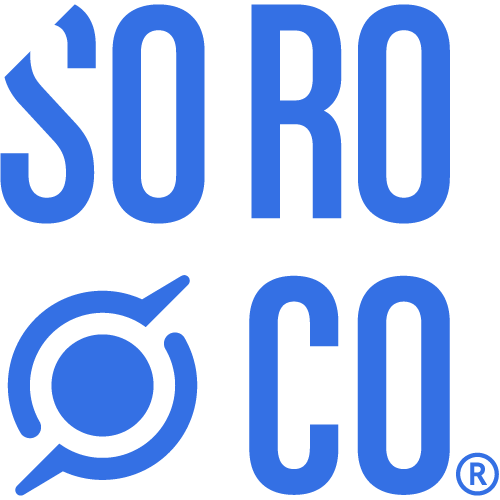|
|
||||||||||||||||||||||||||||||||||||||||||||||||||||||||||||||||||||
|
||||||||||||||||||||||||||||||||||||||||||||||||||||||||||||||||||||
Category: Company
Tangentia’s North American Sales and Leadership Expanding
Tangentia is proud to announce the expansion of our North American sales and leadership team. We understand the value people bring to our organization and it has been our goal since expanding into the USA. to create job opportunities for professionals throughout North America who want to be part of the quickly evolving artificial intelligence and automation industry.

We are excited to announce that Robert Lye is joining our leadership team as Vice President & Chief Evangelist – Automation. Robert will bring thought leadership and transformational thinking to Tangentia customers to aid in building and growing successful intelligent automation programs and accelerating value realization.
Seasoned by hands-on real-world experience, Robert offers great insights into the opportunities and challenges of digital transformation and will be an integral part of ensuring our customers have the tools and support they need to navigate the fast-paced world of automation.
“I am honored and humbled to be joining the Tangentia Family and to work alongside a remarkably talented team,” Robert says. “I am extremely excited for the journey ahead and look forward to enhancing the success of Tangentia customers.”
Also new to the Tangentia team is Joseph Saad, who joins us as our new Sales Account Executive based in Montreal, Canada. He speaks English, French, and Arabic and comes with a very experienced background in sales. Joseph has already embarked on his journey at Tangentia, and we look forward to building a robust Montreal-based team in the near future.

We are also pleased to welcome two new members of our executive sales team in the USA. Shawn Bakos is our new Sales Account Executive based in Delaware, USA. He comes with many years of experience in the IT field besides being in the US Navy. An avid sports person who played competitive ice hockey, we are pleased to have Shawn Bakos flying the Tangentia flag on the US East Coast.
Mike Fox is our new Sales Account Executive based in San Diego, California. Mike is an expert in sales farming, hunting, and fostering profitable win-win deals, and he has a passion for building long-lasting customer relationships. We are excited to have Mike on board and besides bringing on board the warm California sun, we are confident his experience will stand us in good stead on the US West Coast.
Vijay Thomas, Founder and CEO at Tangentia said “It is fantastic to have Robert Lye, take the plunge from being a customer of Tangentia to joining our senior leadership team. It is a ratification of the Tangentia strategy of growth and value creation for our customers.”
George Bennett, VP Sales at Tangentia mentions “ Alongside Bob, we are really excited to have Joseph in Montreal, Mike in San Diego and Shawn in Delaware join our team. It's full steam ahead from now on.”
Tangentia is passionate about bringing the best people onboard, so we can provide top-tier value to our customers through collaboration and innovation. We have been certified as a Great Place to Work for 2022 and we have been certified by the Canadian Aboriginal and Minority Supplier Council as an aboriginal and minority business enterprise.
As one of INC 5000’s Fastest Growing American Companies in 2018 and one of Growth 500’s fastest-growing companies in Canada 6 years in a row, we are always looking for top talent. Visit our Careers page to find out more about how you can become part of the Tangentia team.
Tangentia Partners with Soroco to Make Process Discovery Accessible to Automation Clients
Tangentia, a global leader in digital transformation solutions, announced today that they have strengthened their partner network with the addition of Soroco, a leading provider of process discovery, task mining, and process transformation solutions that are based on an AI-powered #work-graph approach.

This new partnership will allow Tangentia to provide their clients with Soroco's work graph platform – Scout, enabling them to discover end-user interactions to discover, monitor, and improve processes in real-time.
“We are thrilled to join forces with Soroco,” says George Bennett, VP of Business Development for Tangentia. “This partnership will allow us to leverage Soroco Scout, their work-graph platform that will help our clients accelerate their digital transformation programs through a discovery-led process that is world-class”
With head offices in Boston, London and Bangalore, Soroco has a global presence that allows them to provide task mining, process discovery and intelligent process transformation solutions to clients no matter where they are located.
“Streamlining processes helps companies harness the power of automation,” says Vijay Thomas, CEO of Tangentia. “Our partnership with Soroco will make it even easier for us to empower our clients to fill in technology gaps, lower costs and increase productivity by helping them turn unstructured task and process data into insights they can use to improve processes companywide.”
Samson David, CEO of Soroco said, “We are happy to partner with Tangentia who are a leading boutique consulting, technology, and outsourcing firm with global presence. Our partnership would help bridge the most challenging technology gaps for their customers in e-commerce, supply chains, and various industries and help them accelerate their automation and digital transformation programs by discovering their work graph.”
Tangentia and Soroco share the same strategy of building a partner network that will allow them to bring the world’s leading automation software and service providers together to ensure their clients have access to cutting-edge solutions
Tangentia’s think global, act local approach to their solutions, combine with nearly 20 years of experience in digital technology, allows them to help clients across numerous industries simplify their relationship with technology and accelerate their adoption of automation. Click here to learn more about Tangentia Automation.
About Tangentia
Since 2003, Tangentia has been at the leading edge of the technological revolution, helping clients simplify their relationship with technology. Based in Toronto, Canada, they also have offices in New York and Goa, making it possible to reach clients across the globe and across industries.
About Soroco
Soroco is on a mission to discover how the world works to help teams be their best. To do this, we are evangelizing and commercializing the “work graph”, which is a structured view of how teams get work done across people, process, technology, and documents. The “work graph” unifies disjoint categories like Process Mining, Task Mining, user training, BPM and RPA to provide a single source of truth. Teams can use the work graph to identify and resolve sources of friction at work, such as technology impediments, poor process design, opportunities for learning and collaboration, among others. Soroco’s work graph platform, Scout, enables a culture of continuous improvement and identifies benefits from applying a portfolio of change levers, delivering targeted change programs at scale. Soroco has offices in Boston, London, and Bangalore with a roster of Fortune 500 customers across 30 countries. Our team has published 150+ papers and patents. Visit www.soroco.com to learn how we help teams discover their work graph.
Get Started on Your RPA Journey Today
Book a discovery call with a member of Tangentia’s automation team today to find out more about what RPA can do for you.
Navigating Global Supply Chain Challenges with RPA
It has been difficult to ignore the global supply chain issues that have plagued us over the past two years. People who want to buy a new car are facing delays due to a shortage of semiconductor chips, possibly lasting into 2023. Grocery stores in Canada and the U.S. have empty shelves as they struggle to stock the necessities consumers need.
The reality is that the global supply chain has been affected from end-to-end by the COVID-19 pandemic and it is taking its toll. Fortunately, Robotic Process Automation (RPA) can help us navigate and mitigate these challenges to ease the burden on manufacturers, suppliers, businesses and consumers. But before we get into that, let’s take a closer look at the supply chain issues facing the world today.
The Complexity of the Supply Chain Issues
The world’s supply chain issues stem from many contributing factors that are interrelated, forming a complex web of cause and effect that can be felt across the globe and in every industry. At the heart of these supply chain issues is COVID-19. Prior to the emergence of the Omicron variant, COVID was already wreaking havoc on the global supply chain—Omicron made it worse. Here’s how:
Labor shortages
Labor shortages have occurred along every point of the supply chain, from the collection and creation of raw materials, to the factory floor, to shipping and distribution, and finally, to the sales floor. The Omicron variant of COVID-19 has amplified theses shortages, leaving industries without enough staff to keep goods flowing.
Ghost orders
Businesses that are concerned about getting the orders they need from their suppliers, are placing what are called “ghost orders.” Vendors will place the same order with multiple suppliers in the hopes that one of them will come through with a delivery. This creates a false level of demand for these supplies.
Panic buying
With empty shelves becoming increasingly common, consumers are keeping a sharp eye on stock levels. When an item comes in, shoppers will snap them up quickly, once again clearing the shelves and perpetuating the cycle of panic buying.
Bottlenecks
During times when goods become available and need to be transported, seaports become jammed with cargo ships and distribution centers fill up with trucks waiting to load and offload their cargo. The result is a bottleneck as shipments move slowly, causing further delays on goods that are desperately needed in stores and through online vendors.
Lack of data
Many businesses do not have the data they need to accurately predict demand and potential shortages. For example, at the beginning of the COVID-19 pandemic, the automotive industry expected a decreased demand for new vehicles. They canceled orders for semiconductors, only to find that demand was far higher than they anticipated.
How RPA Can Make a Difference
RPA is perfectly poised to help ease the burden of supply chain issues on businesses. By automating tasks that would take humans hours to accomplish, speed and productivity increase, human error is eliminated, and the supply chain can move more quickly.
This cost-effective solution can also help improve the supply chain through:
- End-to-end visibility into the supply chain
- Real-time flow of information
- Rapid response
RPA can help provide visibility into all parts of the supply chain and it can be integrated with relevant supply chain systems. This makes it possible for a business to view the state of each part of their supply chain, as well as their operations and inventory, the current state of the market, and market forecasts.
The ability to gather this information in real-time and the use of artificial intelligence (AI) to analyze it, makes every part of the supply chain transparent and makes it possible to accelerate supply chain operations and facilitate business continuity.
As an example, consider the manufacturing industry. RPA provides manufacturers with access to a complete and accurate inventory of raw materials required in their manufacturing, which will allow them to determine the risk associated with each component of the products they manufacture.
They can then make realistic predictions as to when certain components will become available and develop a manufacturing schedule accordingly. This information can then be passed up the supply chain, influencing distribution and delivery schedules.
COVID-19 is still with us, and it will continue to affect the supply chain for months to come. But RPA can help ease the burden and increase the efficiency and agility of the supply chain to minimize the impact of the pandemic.
Reach out to one of our team members at Tangentia and discover how we can work with you to create a customized RPA solution to meet your supply chain needs.
Get Started on Your RPA Journey Today
Book a discovery call with a member of Tangentia’s automation team today to find out more about what RPA can do for you.
Process Mining Defined | What It Is, How It Works, And What It Can Do For Your Business
Legacy business process management is obsolete.
Not that it worked particularly well to begin with. Per The Harvard Business Review, too often when reengineering a process, businesses fail to focus on how the process currently performs. While charting out the way they want things to work, they lose sight of the inefficiencies, bottlenecks, and performance problems within their existing ecosystem.
On the opposite end of the spectrum, there are the businesses that embroil themselves too deeply in analyzing their existing processes. In the absence of any effective process management tools, they spend inordinate time and resources on interviews and qualitative observation. The end result is the same.
Nothing gets done.
Even in organizations where roadmapping and analysis are well-balanced, there is a lack of visibility. A lack of connectivity between processes and the business's enterprise information system. Process mining represents the solution to that problem.
What Is Process Mining?
Process mining is essentially the intersection of data science and business process management. The basic idea is that in a modern context, every business process leaves behind a series of digital footprints. Although these are not always visible to data scientists, these footprints can functionally serve as 'breadcrumbs' through which an organization can gain a more complete picture of how its processes and systems intersect.
Process mining isn't actually a new idea. Although the technology to enable it only recently became available, it has existed as a theoretical field of research for over twenty years. The concept was first introduced in 1999 by Will van der Aalst, a Dutch computer scientist who is widely regarded as “the godfather of process mining.”
How Does Process Mining Work?
Process mining can typically be broken into six stages. Note that not every process mining platform applies all of these techniques.
- Ingestion and Orchestration. This is where the 'mining' in process mining takes place. Specialized algorithms are used to extract data from business information systems. This data may take many forms, including event logs, audit reports, transaction records, and customer support tickets.
- Discovery. The process mining platform leverages the consolidated data from the first step to create models of each process being evaluated. Referred to as process graphs or process maps, these are frequently interactive and explorable, and in some cases may include multiple process paths.
- Conformance. As processes are charted out, the algorithm references an intended process model, flagging any deviations so that they might be addressed. Insights from conformance may also be used to improve the existing model, a process typically referred to as performance mining.
- Analytics. The platform applies a range of different metrics to its process models, which may further assist in identifying root causes for the application of targeted fixes. This also allows a business to determine the impact each inefficiency has on business outcomes, and by association the return on investment that may be gained by optimizing that process.
- Benchmarking. By creating a digital twin of the process, the business can explore multiple scenarios to determine the most effective model. They can also benchmark this twin against their existing process, or leverage an external process model for the same purpose.
- Application. The final step is for the business to apply the insights generated in the previous five steps. This is typically best achieved as part of a greater business optimization initiative.
It's important to understand the process mining is ongoing. It is not a project that one can simply mark as finished and forget. There will always be new efficiencies to discover, new bottlenecks to address, and new opportunities to leverage.
What Are The Most Common Use Cases for Process Mining?
Typically, process mining is most commonly applied for one of the following purposes:
- Human Resources. Improving recruitment, hiring, and onboarding practices. Optimizing employee management, including training, compliance, and performance tracking.
- General Business Operations. Optimization of common business processes such as report generation, account creation, and approvals.
- Finance. Enhancing procurement, improving invoice and payment processing, and identifying opportunities to reduce overhead through automation.
- Software Delivery. More efficient lifecycle management, migration, and deployment. Greater visibility into testing and development.
- Information Technology. Optimizing network operations, server management, and security controls. Running simulations to ensure more efficient deployments, particularly in hybrid environments.
- Support. Identifying bottlenecks in ticket routing, and ensuring more effective, efficient resolution for both internal and external support requests.
What Are The Benefits of Process Mining?
The first, most obvious benefit of process mining is that it provides direct, objective insights. It looks 'below the hood' of a business, automatically mapping each process from tangible data. In addition to being less biased, process mining is considerably more accurate than legacy techniques such as surveys or workshops.
The second major benefit is tied to automation. Compared to legacy business process optimization, process mining is significantly more efficient. Because it doesn't require any manual work, this also means it's more cost-effective, as well.
Most process mining platforms also run without interrupting existing systems and processes, meaning you needn't worry about interrupting workflows or having to implement any complicated workarounds.
The application of process mining, as one might expect, can also improve a business in a multitude of ways:
- Standardization of business processes
- Improved accuracy, revenue, and outcomes through business process automation.
- Reduced lead times and reaction times when dealing with customers.
- Address noncompliance in real-time and analyze audit data more efficiently.
- Identify bottlenecks and address process conflicts.
- Eliminate redundant workflows.
Data-Driven Decision Making
Business process optimization has long felt like an uphill battle, but it no longer needs to be. With the advent of process mining, businesses can leverage data science and analytics to gain a level of visibility into business operations which would have previously been impossible. And through that visibility, they can make better, more informed decisions.
And more importantly, they can do so in a way that allows them to clearly demonstrate their efforts to senior leadership, both justifying their budget and providing executives with peace of mind.
Get Started on Your Digital Journey Today
Book a discovery call with a member of Tangentia’s digital team today to find out more about what process mining can do for you.
Monthly Tangentia Byte January 2022
|
|
||||||||||||||||||||||||||||||||||||||||||||||||||||||||||||
|
||||||||||||||||||||||||||||||||||||||||||||||||||||||||||||
eCommerce Integration a Top Tech Trend to Watch in 2022
Technology has always evolved to adapt to a changing world and the changing needs of the people who live in it. That fact couldn’t be more evident than it has been in the past few years.
The shifting expectations of consumers and employees, fueled by the increase in hybrid and remote work environments and online shopping over the past couple of years, demands solutions that make working and shopping easier than ever. This has given rise to predictions for the top tech trends in 2022.
Tech Trends to Watch
Boomi’s 2022 Tech Trend Predictions outlines the top tech trends to follow in 2022. These tech trends include:
- Low-code solutions – With IT staff and skill shortages looming large in the tech industry, the need for low-code solutions to accomplish digital transformations is a must.
- Automation – Automation will be taken to the next level in 2022, relieving employees from performing manual tasks that are time-consuming and prone to error and lowering operational costs across industries.
- Integration in the workplace – The need to work remotely a significant amount of time and The Great Resignation, both driven by the COVID-19 pandemic, has resulted in the need to develop data-driven processes and onboarding that will ensure better employee experiences.
- The customer experience – Organizations that do not make use of integration to create a superior user experience will lose ground to their competitors.
With these trends in mind, let’s take a closer look at integration and the customer experience, particularly when it comes to ecommerce.
The Need for Integration in eCommerce
There is no industry where speed is more important than in the ecommerce industry. In the past 10 years, consumers have come to expect immediate connectivity and service at lightning speed. The COVID-19 pandemic has only increased the expectations of consumers as more and more people have turned to online shopping.
In the U.S., 52% of people are shopping more online, including grocery shopping, a domain that was once strictly a brick-and-mortar shopping experience. The UN reports that globally ecommerce has grown into a $2.9 trillion industry thanks to the pandemic.
What this means for ecommerce companies is that integration is critical to maintaining market share. This is just as true for brick-and-mortar retail companies that have an online presence as it is for strictly online ecommerce businesses.
The goal behind integration is to connect systems within your company, as well as integration your own systems with those of your partners. This includes not only your ecommerce platforms, but all supporting applications, such as inventory management, CRM, content management, digital marketing, and financial information. This will ensure that you are able to:
- Improve data accuracy
- Increase the speed of data exchange across systems
- Keep your platform up-to-date
- Provide customers with a more personalized and customized experience
- Sync inventory in real-time across all sales channels
- Streamline and simplify business processes
- Improve scalability as sales volume and the number of sales channels grow
The result of this integration is that customers will be able to shop whenever and wherever they are and via any channels they wish. They will experience a seamless purchasing process and receive instantaneous communications and timely updates on orders so they will always know their status, thanks to:
- Real-time inventory tracking
- Instant order processing and fulfillment
- Real-time status updates and alerts
However, in order to make this a reality, your ecommerce integration has to be of the highest quality.
Top-Quality Integration
The very best quality in ecommerce integration will ensure that your finances and inventory processes are all automated and fully integrated with your ecommerce platform. Boomi offers the first 100% cloud-based platform and is an industry leader in integrations.
Boomi’s simple, instant integration between on-premise and cloud systems requires no coding, and you will have your automation up and running in no time, with pre-built solutions that help accelerate ecommerce integrations.
What this means is that you don’t have to invest heavily in IT to implement full integration. Instead, you will have easy access to your integration platform without the need to install or maintain additional software or hardware.
Tangentia is proud of our partnership with Boomi, which will allow our customers to build faster integrations and reduce the time they spend on development by weeks or months, enabling a quicker digital transformation.
Reach out to an experienced Tangentia team member today for more information on how to enjoy the full potential of Boomi.
Get Started on Your Digital Innovation Journey Today
Contact us for more information.
Monthly Tangentia Byte December 2021
|
|
|||||||||||||||||||||||||||||||||||||||||||||||||
|
|||||||||||||||||||||||||||||||||||||||||||||||||
Expanding Robotic Process Automation business in the U.S. – Tangentia America
Tangentia, a leading global agile digital transformation company, headquartered in Toronto, Canada and with operations in Goa and Kerala in India, has expanded its footprint in the U.S. Market as part of their rapid growth and global strategy. The expansion which has been brewing for sometime now, will accelerate with the hiring of George Bennett who has joined Tangentia America as VP of Business Development to be based in Phoenix, Arizona.
Through its local presence in Canada, India and now in the USA, Tangentia has been able to provide its customers with a “Global Boutique” delivery model. Tangentia boasts 1000+ customers worldwide which includes 13 Fortune 500 customers in 30+ countries. Tangentia proprietary platforms like Tangentia Gateway and TiA (Tangentia Intelligent Automation) manage transactions worth more than USD 10 Billion worldwide every year, which include processing B2B transactions for India’s largest retailer, the largest appliance manufacturer in the world and the largest beverage alcohol distributor in the world.
Expanding into the U.S. market comes with the promise of creating more job opportunities for aspiring candidates, who want to be a part of the dynamic and fast-evolving automation and artificial intelligence industry. Robotic Process Automation (RPA) is positioned to be over half of Tangentia’s business and is on track to be a 50 million dollar organization with over 500 employees by 2025.
 George Bennett, VP of Business Development at Tangentia says “I am honored to be part of an organization that is rapidly expanding and delivering impactful solutions to its customers that change the way people work. The need and demand for Robotic Process Automation will continue to grow as more organizations of all sizes look to ensure business continuity and streamline their workforce.” George is a graduate of the prestigious West Point Military Academy and has managed more than 300 million dollars in revenue when at FileNet which was bought by IBM. He was also a member of the US WaterPolo Olympic team.
George Bennett, VP of Business Development at Tangentia says “I am honored to be part of an organization that is rapidly expanding and delivering impactful solutions to its customers that change the way people work. The need and demand for Robotic Process Automation will continue to grow as more organizations of all sizes look to ensure business continuity and streamline their workforce.” George is a graduate of the prestigious West Point Military Academy and has managed more than 300 million dollars in revenue when at FileNet which was bought by IBM. He was also a member of the US WaterPolo Olympic team.
 Anna Thomas who heads Tangentia PMO globally, will be leading the US expansion along with George. Anna is based in Atlanta, Georgia and is an alumni of the prestigious Indian Institute of Management (IIM-Calcutta) and completed her Micromasters in Supply Chain Management from MIT. She has worked at large global companies like Coca Cola, J&J, Amgen, Ryder, Reliance, and many others. Anna on Tangentia's foray into the US, “Customers may be separated geographically but their core business is still the same. Tangentia brings to the table an extensive experience in transforming customer business globally, excellent delivery on Projects and a commitment to partner with the customers in their transformation journey. Our customer success stories cut across industries like Healthcare, Energy, Retail, Finance, Real estate and Telecom. The US market is exciting with boundless opportunities and Tangentia is all geared up to take on this challenge”
Anna Thomas who heads Tangentia PMO globally, will be leading the US expansion along with George. Anna is based in Atlanta, Georgia and is an alumni of the prestigious Indian Institute of Management (IIM-Calcutta) and completed her Micromasters in Supply Chain Management from MIT. She has worked at large global companies like Coca Cola, J&J, Amgen, Ryder, Reliance, and many others. Anna on Tangentia's foray into the US, “Customers may be separated geographically but their core business is still the same. Tangentia brings to the table an extensive experience in transforming customer business globally, excellent delivery on Projects and a commitment to partner with the customers in their transformation journey. Our customer success stories cut across industries like Healthcare, Energy, Retail, Finance, Real estate and Telecom. The US market is exciting with boundless opportunities and Tangentia is all geared up to take on this challenge”
“The move to add more people locally in the US is part of our ‘Think Global, Act Local’ strategy and although we already had several customers in the USA and a minor office presence, this is going to be a major strategic push into the USA. With local presence and support coupled with our award-winning global delivery model, we will bring more value to our current and future customers.” Says Vijay Thomas, Tangentia CEO and founder.
Tangentia’s expanding into the U.S. market via Tangentia America will accelerate the mission to automate, innovate and make an impact.
Get Started on Your RPA Journey Today
Book a discovery call with a member of Tangentia’s automation team today to find out more about what RPA can do for you.
RPA Removes Process Burden for Enterprises
The larger an organization is, the more complex their processes. The more complex these processes are, the longer they take to complete and the more prone they are to error. Human workers can spend hours executing processes, such as accounts payable processes or customer onboarding, 70% of which could be automated. This is time they could spend on tasks of higher value.
Enter robotic process automation (RPA), an automation software that uses software bots to perform individual tasks and end-to-end processes, improving productivity while taking the process burden off of human workers. In fact, RPA is so effective that 53% of respondents to a Deloitte RPA Survey said they are already implementing RPA in their organizations.
But what is it about automation that makes such a difference? Why is RPA for enterprise so beneficial? Let’s take a closer look.
Why RPA for Enterprise?
The most obvious benefits of enterprise RPA are that it significantly reduces costs and increases productivity and accuracy. Bots can perform processes in a fraction of the time of a human worker, meaning they can get more done in a shorter amount of time, and without the inevitable error that comes with manually performing these processes.
But when we dig deeper, it is easy to see that there are additional benefits to RPA for enterprise. These include:
- Ease of development: Bots can be created and programmed with minimal, if any coding. This means you don’t have to be a programming wizard to create the bots you need.
- Full customization: RPA can be fully customized to meet your unique business needs, ensuring only the processes relevant to your organization are automated.
- Full scalability: Bots are controlled by a central management server that includes bot management features such as scheduling and queueing. This means it is easy to increase or decrease scale as needed, you can bulk process actions and you can assign actions to bots based on priority.
- Seamless integration: RPA can be seamlessly integrated with your IT infrastructure and all your apps and systems, whether they are legacy, cloud-based or hybrid.
- RPA management: You will enjoy features such as a user-friendly interface to monitor bot activities and performance and the ability for humans to intervene when necessary.
- Heightened security and compliance: RPA allows you to ensure bots have encrypted credentials for access to your systems and that only authorized human workers have access to the RPA system. You will also be able to adhere to all relevant security standards and generate audit trails and reports.
- Employee satisfaction: Employees who are relieved of manually running processes will be able to focus on tasks that are of higher value and more meaningful to the company. The result is employees who feel like they are contributing to the greater good and who are more engaged because of it.
RPA Use Cases for Enterprise
Customer Communications
RPA can improve customer communications by answering general inquiries that would keep a human worker from deeper engagement with customers. RPA can do this through web-based chat, SMS text messaging and other media. When human workers no longer need to answer every inquiry, they can handle more complex requests and issues from customers and focus on building and strengthening customer relationships.
Human Resources
Human resources is a data-heavy department that deals with employee data, payroll and benefits and accounts payable and receivable. Besides pulling data and form-filling, RPA can do things like track an employee’s sales results or their continuing education record. The RPA system can then respond, perhaps by setting new sales targets for the employee or notifying management of the need for additional training.
Data Management
Data management is a massive undertaking in many industries, such as healthcare and legal. In healthcare, patient information when onboarding new patients and the transfer of patient information between healthcare providers is a massive undertaking. The same can be said for the legal industry, where lawyers often spend many unbillable hours dealing with paperwork and timesheets.
RPA can take care of this data management in a number of ways. Bots can be programmed to pull information from a variety of sources and input information into forms. RPA can also create a centralized repository for all relevant information on a patient or client, making it easy to access by those authorized to do so.
Embrace RPA Now to Remain Competitive
Large enterprises are wise to embrace the RPA revolution now. Remaining competitive in your industry doesn’t just mean keeping up with other enterprises of similar size. It also means being able to compete with startups and small and medium businesses (SMBs) that can more easily adopt and implement RPA, allowing them to reduce costs from day one, grow quickly and scale easily.
Book a discovery call with a member of the Tangentia team today to find out more about what RPA can do for your enterprise.






















































